- 1. Key Takeaways
- 2. Visiting Grand Canyon National Park
- 2.1. Best Time to Visit Grand Canyon National Park
- 2.2. Grand Canyon National Park - Where to Stay
- 3. Grand Canyon National Park Itinerary
- 3.1. Day 1: Enjoy the Rim Trail: Hermit's Rest to Yaki Point
- 3.2. Day 2: South Kaibab Trail to Skeleton Point and Driving the Desert View Road
- 4. Best Things to Do and See at the Grand Canyon
- 4.1. Grand Canyon National Park Things to Do
- 4.2. Must-See Places to Visit in the Grand Canyon National Park
- 5. Final Thoughts
- 6. FAQs
- 6.1. Is the Grand Canyon one of the 7 Wonders?
- 6.2. Can you walk the entire Grand Canyon?
- 6.3. Can you hike in the Grand Canyon alone?
- 6.4. What is not allowed at the Grand Canyon?
- 6.5. What do you wear when visiting Grand Canyon National Park?
- 6.6. Where to go in the Grand Canyon - South Rim or North Rim?
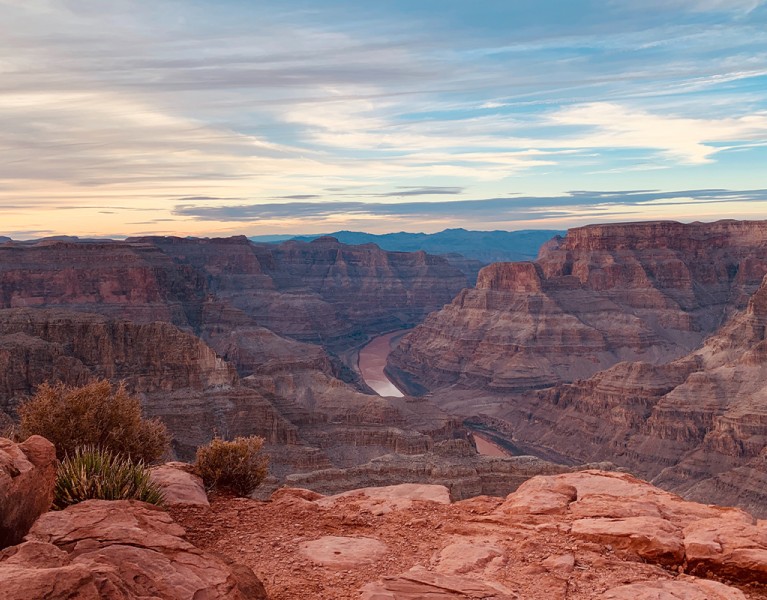
The Grand Canyon National Park Travel Guide - Planning Your Visit
Table of Contents [Show]
The Grand Canyon is one of the world's most spectacular wonders. Winding for 277 miles from Lee's Ferry to the Grand Wash Cliffs, this crown jewel of the American Southwest is yet another reminder that Mother Nature is indeed the best artist.
For years, the Arizona Grand Canyon National Park has been attracting close to five million visitors annually. And while viewing this gorge from its rims is an experience in and of itself, there's no shortage of things to do at the Grand Canyon, whether solo or with family and friends.
From rim-to-rim hiking to horseback riding and visiting a village at the base of the canyon, here's how to make your Grand Canyon trip epic!
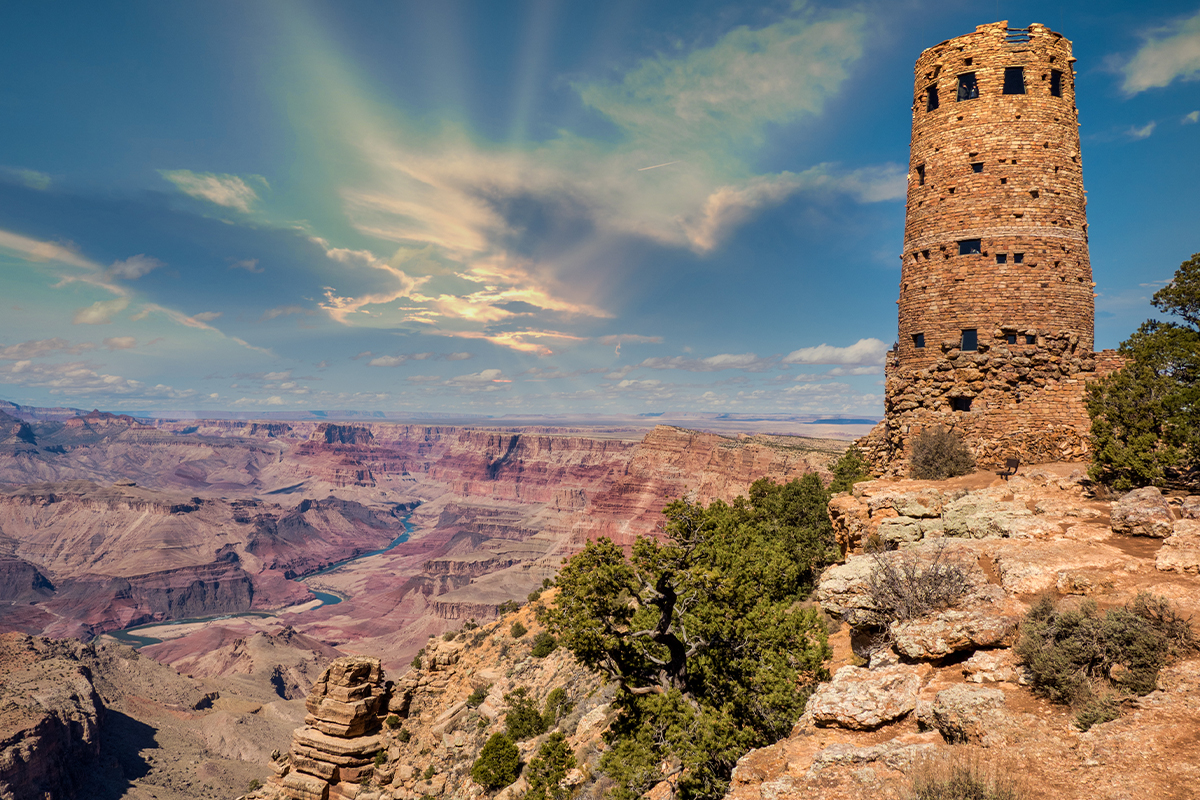
Key Takeaways
- The Grand Canyon is a mile-deep, 277-mile-long geologic wonder in Northwestern Arizona.
- The Grand Canyon Rims are the South Rim, North Rim, Grand Canyon West, and Grand Canyon East. Only the South Rim and North Rim are inside Grand Canyon National Park.
- Most travelers visit Grand Canyon South Rim because it's more developed and easily accessible from major western cities. In addition, the South Rim remains open throughout the year, whereas the North Rim opens from mid-May through mid-October.
- June to August is the high season in Grand Canyon National Park; March to May and September through October are the shoulder months; November to March is the low season.
- The South Rim offers six in-park hotels and lodges. Grand Canyon Lodge is the only lodge on the North Rim.
Visiting Grand Canyon National Park
The Grand Canyon is an immense, steep-sided gorge in the northern corner of Arizona. Carved by the Colorado River over millions of years, this incredible natural formation is a fine example of some positives to soil erosion.
A UNESCO World Heritage Site, the Grand Canyon is the central feature of Grand Canyon National Park. It averages a depth of about one mile throughout its 277 miles, but its deepest point (near Phantom Ranch) reaches around 6000 feet.
Best Time to Visit Grand Canyon National Park
The best time to visit Grand Canyon National Park will depend on your plan, as most activities are weather-dependent.
Summertime is the peak season in Grand Canyon National Park as visitors take advantage of the longer days, warmer weather, and summer break. While the crowds are unavoidable, particularly on the South Rim, all the park's facilities and attractions are open in summertime.
Keep in mind that the Grand Canyon often remains hot and dry, particularly between July and August. With daytime temperatures ranging from 70 to mid-80s on the South Rim and often exceeding 100 degrees inside the canyon, summertime is a less ideal time for strenuous activities like hiking.
If you must travel during the summer, we'd recommend visiting the North Rim, as the weather is typically cooler there.
For fabulous weather, thinner crowds, and cheaper accommodation, visit during the shoulder months of March through June and September through October.
If you've already visited Grand Canyon National Park and are hoping for a different experience, consider visiting it in the dead of winter (Dec through Feb). The view of a snow-covered canyon is something out of this world.
Hiking in winter is also much more enjoyable, thanks to the fewer crowds and the moderate temperatures. Remember to include thermal underwear, warm pants, long-sleeved shirts, and gloves/mittens in your backpacking checklist. Kuhl's men's outdoor wear and women's hiking clothing are great places to start your search for the best winter hiking clothes.
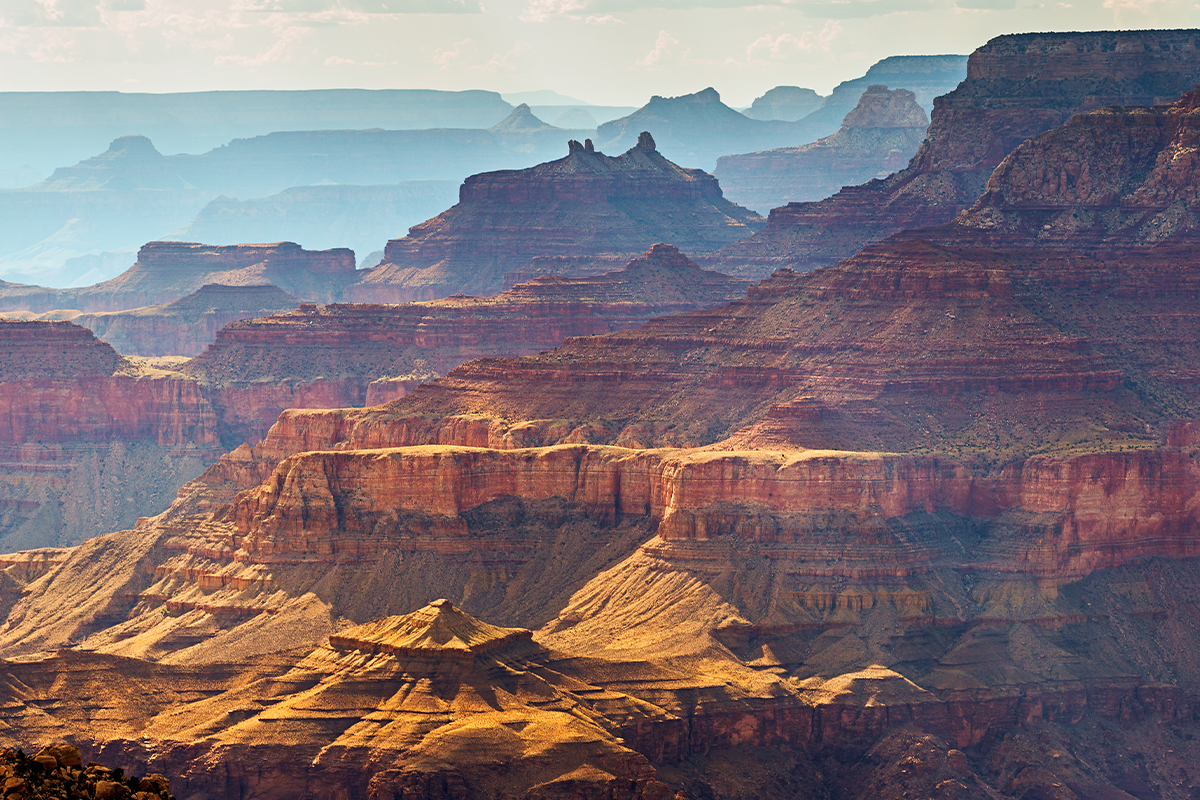
Grand Canyon National Park - Where to Stay
On the South Rim
The Grand Canyon South Rim offers six in-park hotels and lodges, including one at the canyon's base.
These are the hotels and lodges atop the South Rim:
El Tovar Hotel - a rustic 1905 hotel perched on the edge of the South Rim. El Tovar Hotel has 78 rooms, each with air conditioning, a full bath, in-room coffee, telephone, and cable television. The only downside to El Tovar is its expensive rooms, with the cheapest starting at around $372 before taxes.
Bright Angel Lodges and Cabins - this iconic lodge is a slightly cheaper option just five minutes from El Tovar. This early 20th-century lodge has 89 units comprising 40 lodge rooms and 49 cabins.
Kachina and Thunderbird Lodges - these two lodges are popular among travelers looking for contemporary accommodation in Grand Canyon National Park. The two are located on the edge of the rim, with some rooms offering at least partial views of the Grand Canyon.
Maswik Lodge - this relatively bland motel-style lodge is an easy 0.25-mile walk from the edge of the South Rim. If you are okay with the five-minute walk to the rim, Maswik Lodge rewards you with easy parking, air conditioning, and some of the most commonly discounted rooms on the South Rim.
Phantom Ranch Cabins - this is a historic cabin at the bottom of the Grand Canyon on the north side of the Colorado River. It's typically considered an oasis for hikers and mule riders on the Bright Angel Trail.
On the North Rim
Grand Canyon Lodge - this is the only lodge on the Grand Canyon North Rim. It has 431 lodging units, all an easy walk to the canyon rim. Grand Canyon Lodge opens from May 15th through October 15th every year.
RV Camping
Trailer Village is the only RV camping ground offering full Grand Canyon National Park hookups. It's located on the South Rim, a short walk to a tavern and a market.
Camping
Grand Canyon camping is an excellent option for travelers who want to forge a more intimate connection with this natural wonder. There are six established campgrounds in Arizona Grand Canyon National Park: three on the South Rim and three on the North Rim.
South Rim Campgrounds
- Mather Campground (located within Grand Canyon Village)
- Desert View Campground
- Trailer Village
North Rim Campgrounds
- North Rim
- Indian Hollow
- Tuweep
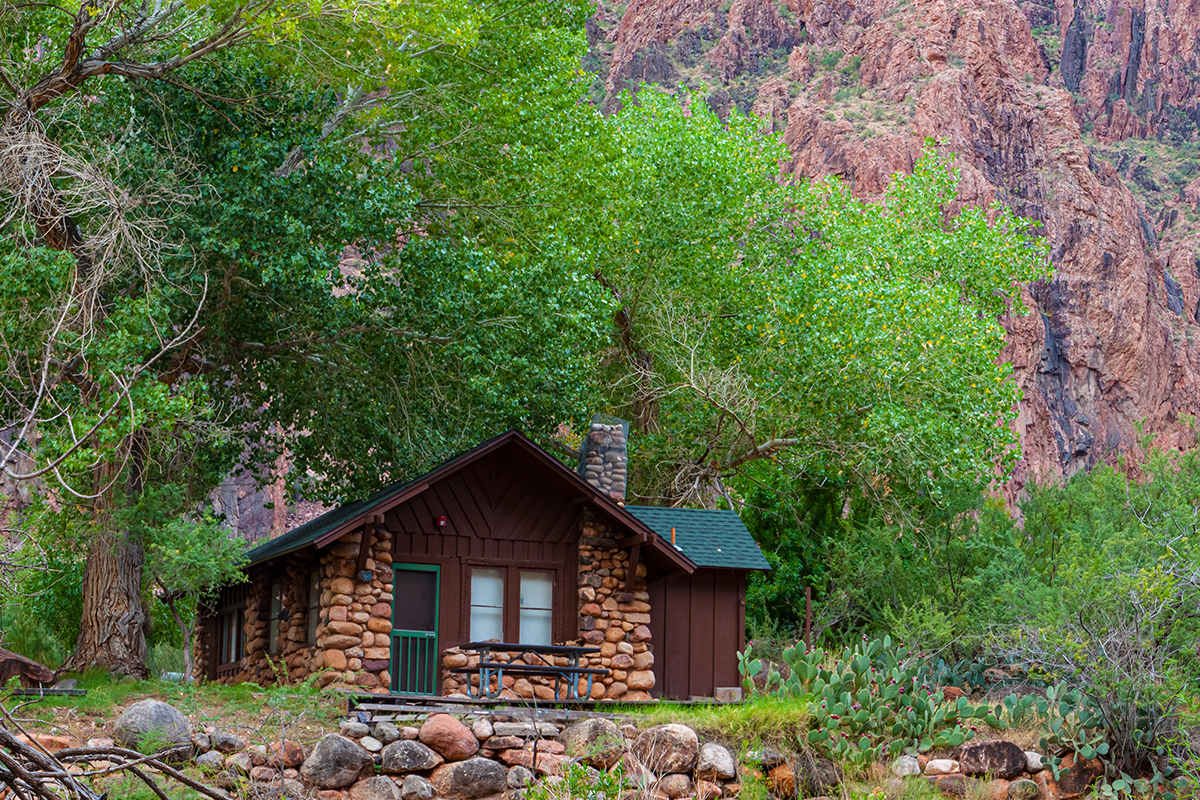
Grand Canyon National Park Itinerary
Wondering how to plan your trip to Grand Canyon National Park? We've compiled this Grand Canyon travel guide to help you make the most of your visit.
Let's start here: how much time do you have for your Grand Canyon National Park vacation?
The Grand Canyon is an immense natural wonder. We suggest setting aside at least two days if you plan to visit the South Rim only and 4-5 days for both rims.
Here's how to visit the Grand Canyon National Park Arizona (South Rim) in two days. We assume you'll stay inside the park and the Grand Canyon Village for this itinerary.
Day 1: Enjoy the Rim Trail: Hermit's Rest to Yaki Point
There's no better way to orient yourself to the Grand Canyon than walking a section of the Rim Trail. The Rim Trail is an iconic hiking, walking, and biking route that allows you to experience the Grand Canyon as it dramatically changes at every orange, red, and pink turn.
The walk from Hermit's Rest to Yaki Point is all about marveling at the majesty of the gorge and how long it took to become the art it is today.
The trail connects several viewpoints that must not be missed, including Pima, Maricopa, Mohave, Hopi, Mather, and Yaki points.
Be sure to get an early start from your hotel for the best sunrise photos at Hermit's Rest. You can grab lunch at El Tovar Hotel or Bright Angel Lodge.
The distance between Hermit's Rest and Yaki Point is roughly 13 miles and can take 3-5 hours to complete. You don't have to do the entire hike, though. Plus, you can take a shuttle to the next viewpoint and back to your starting point. Another option is to hire a bike from Bright Angel Bicycles and hit all the attractions on two wheels.
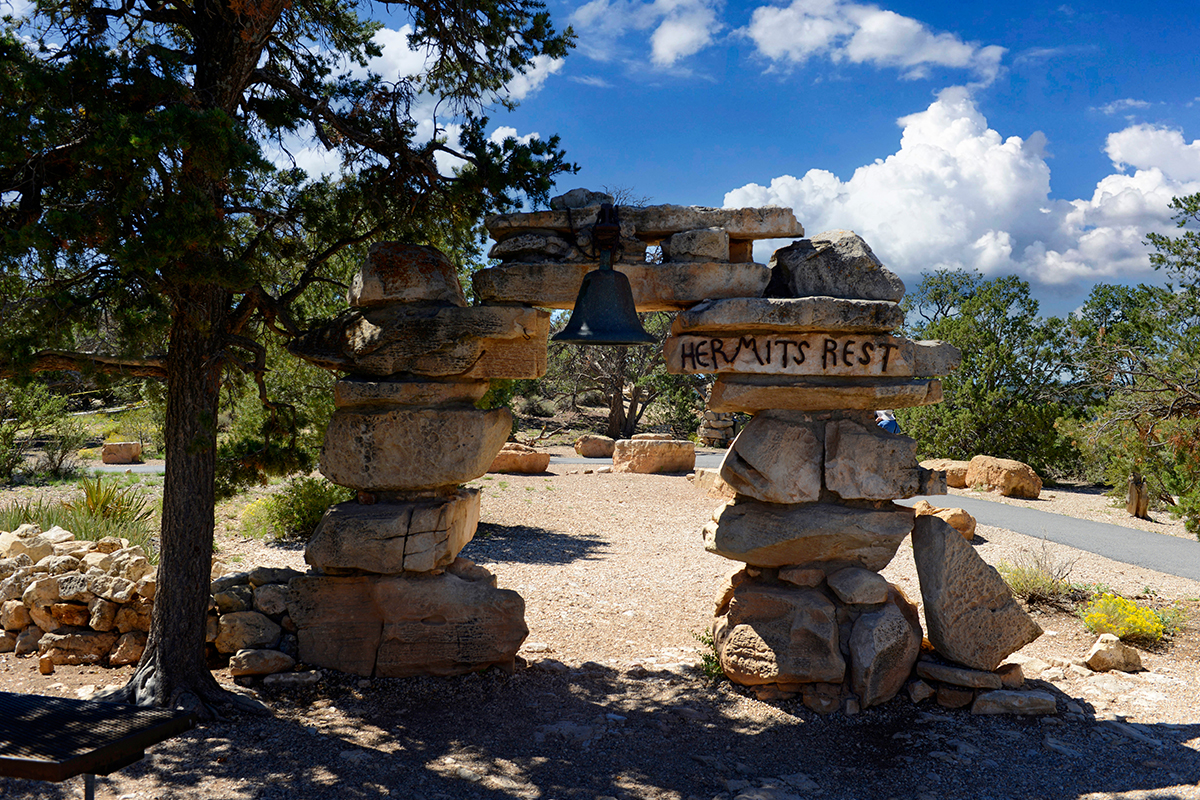
Day 2: South Kaibab Trail to Skeleton Point and Driving the Desert View Road
For the second day, how about ticking off two of the best Grand Canyon things to do - hiking to the bottom of the canyon and taking the best scenic drive in the park?
Consider starting early (around 5:30 AM) to catch sunrise on the trail. Stop at the Grand Canyon Village visitor center for maps and SNACKS, then take a free shuttle to South Kaibab Trailhead. Be sure to fill up your water bottle at the trailhead, as there's no water along the trail.
South Kaibab trail is a moderately challenging route but very rewarding. About 0.75 miles into the hike, you'll be at Ooh Aah Point. This viewpoint is aptly named after the spectacular panoramas it opens to, including the least-visited Grand Canyon East.
After soaking in the views, feel free to turn around if you’re a beginner hiker or don’t have enough water. Otherwise, continue to the Cedar Ridge Checkpoint (1.5 miles in). This is a good place to have lunch and use the restrooms before hiking further down to Skeleton Point (3 miles in).
At Skeleton Point, enjoy the stunning river views and reward yourself with some photos for the Gram. Relax for a bit as you munch on snacks to boost your energy level. You’ll really need it to tackle the 3-mile hike back up.
In the afternoon, hop into your car and get ready for the most fantastic scenic drive in Grand Canyon National Park.
The Desert View Drive starts about a mile east of Grand Canyon Village and ends near the park’s east entrance. The drive covers multiple viewpoints along the way, all of which demand at least a few minutes.
These are the five must-see stops along the 25-mile drive:
- Duck on a rock viewpoint
- Grandview Point
- Moran Point
- Tusayan Museum and Ruin
- Navajo Point
- Desert View Watchtower
Sunsets at Desert View Watchtower are incredible and almost mandatory to view. Remember to leave some space in your camera for this magical moment.
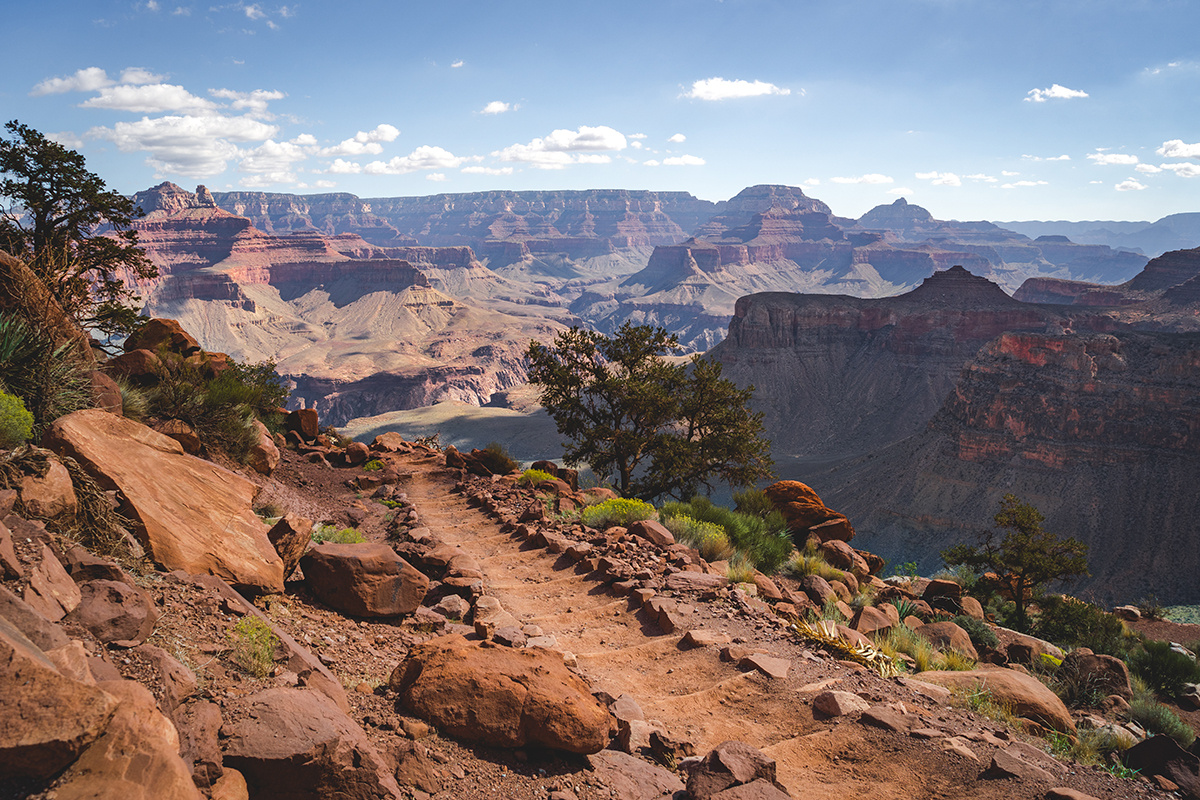
Best Things to Do and See at the Grand Canyon
Grand Canyon National Park Things to Do
Hiking
Hiking is one of the best ways to experience the grandeur of the Grand Canyon. We’ll be honest with you. Most Grand Canyon hiking trails are no joke. But if your New Year’s resolution is to tackle some of the most challenging hikes in the US, a few await you in Grand Canyon National Park.
These are the best Grand Canyon hikes;
- South Kaibab Trail (South Rim, 7 miles, challenging)
- North Kaibab Trail (North Rim, 14.2 miles, challenging)
- Bright Angel Trail (South Rim, 8 miles, challenging)
- Bright Angel Point Trail (North Rim, 1.5 miles, easy)
- Grandview Trail (South Rim, 8 miles, challenging)
- Rim Trail (South Rim, 13 miles, easy to moderately challenging)
Catch the Grand Canyon Sunset
Watching the sun sink behind the rugged landscape of a canyon is on most people’s lists of must-do Grand Canyon activities - and for a reason. As the golden rays of the sun hit the top of the rim and the expansive sky glows orange, the jagged walls of the canyon treat visitors to a dramatic array of colors that make up every sunset lover’s golden hour.
The best places to catch spectacular sunsets inside the Grand Canyon National Park are:
South Rim
- Desert View
- Yaki Point
- Hopi Point
- Pima Point
- Mojave Point
- Lipan Point
- Yavapai Point
North Rim
- The Grand Canyon Lodge and Patio
- Bright Angel Point
- Cape Royal
- Point Imperial
Camping
Camping in the Grand Canyon is a one-of-a-kind experience that every camping enthusiast should enjoy at least for a night. Camping is also one of the cheapest accommodation options in the park. Whether you prefer RVing, backpacking, or pitching a tent, get your camping checklist in order and prepare for a good time under the stars.
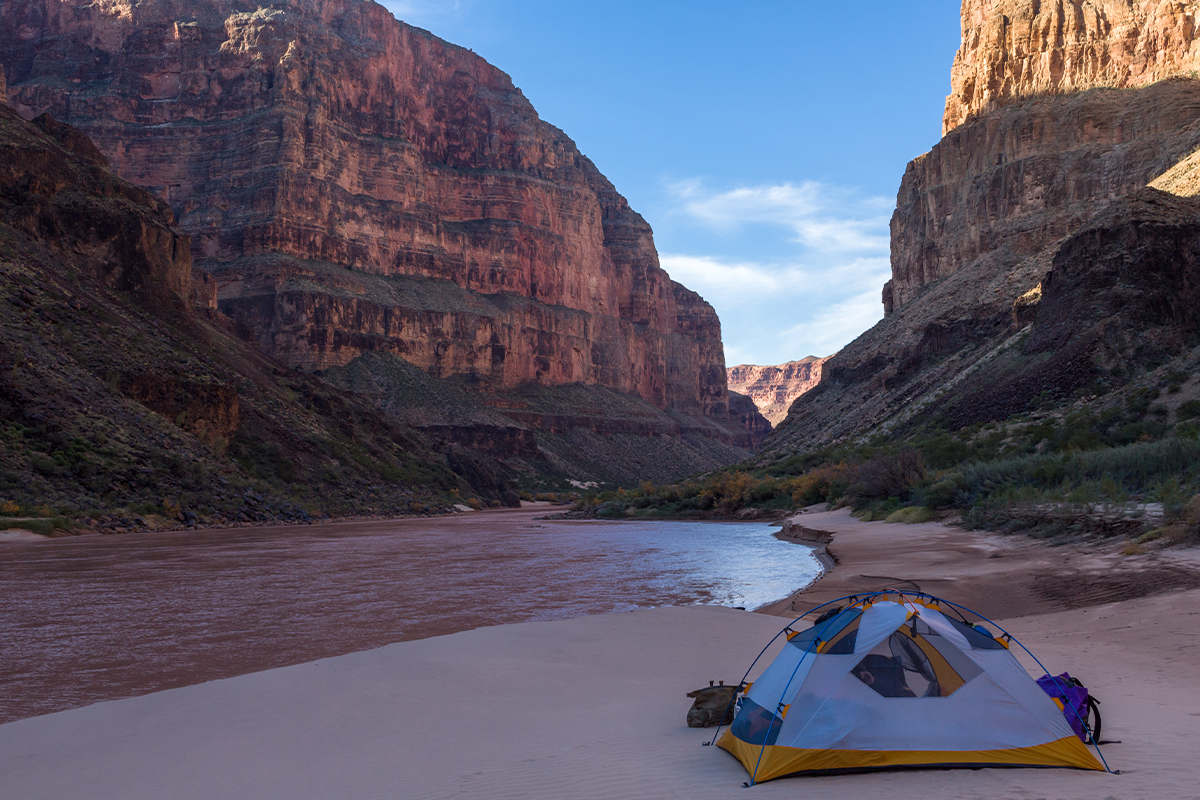
Must-See Places to Visit in the Grand Canyon National Park
Desert View Watchtower
The Desert View Watchtower is an iconic landmark famous for its history, architecture, artwork, and expansive 180-degree views. It’s located about 25 miles or 40 minutes from Grand Canyon Village.
Tusayan Ruins
The Tusayan Ruins give a glimpse into the lifestyle of the ancestral Puebloan people who called the Grand Canyon home some 800 years ago. The site is a hidden gem as it rarely gets overcrowded, even when other Grand Canyon attractions are bursting at the seams. The Tusayan Ruins and museum are three miles west of Desert View Watchtower along the South Rim.
Horseshoe Bend
The Horseshoe Bend is one of the most photographed landscapes of the Grand Canyon. Although it’s not inside Grand Canyon National Park, it’s still part of the unique formations created by the Colorado River. The Horseshoe Bend is located on the Grand Canyon East Rim near Page, Arizona.
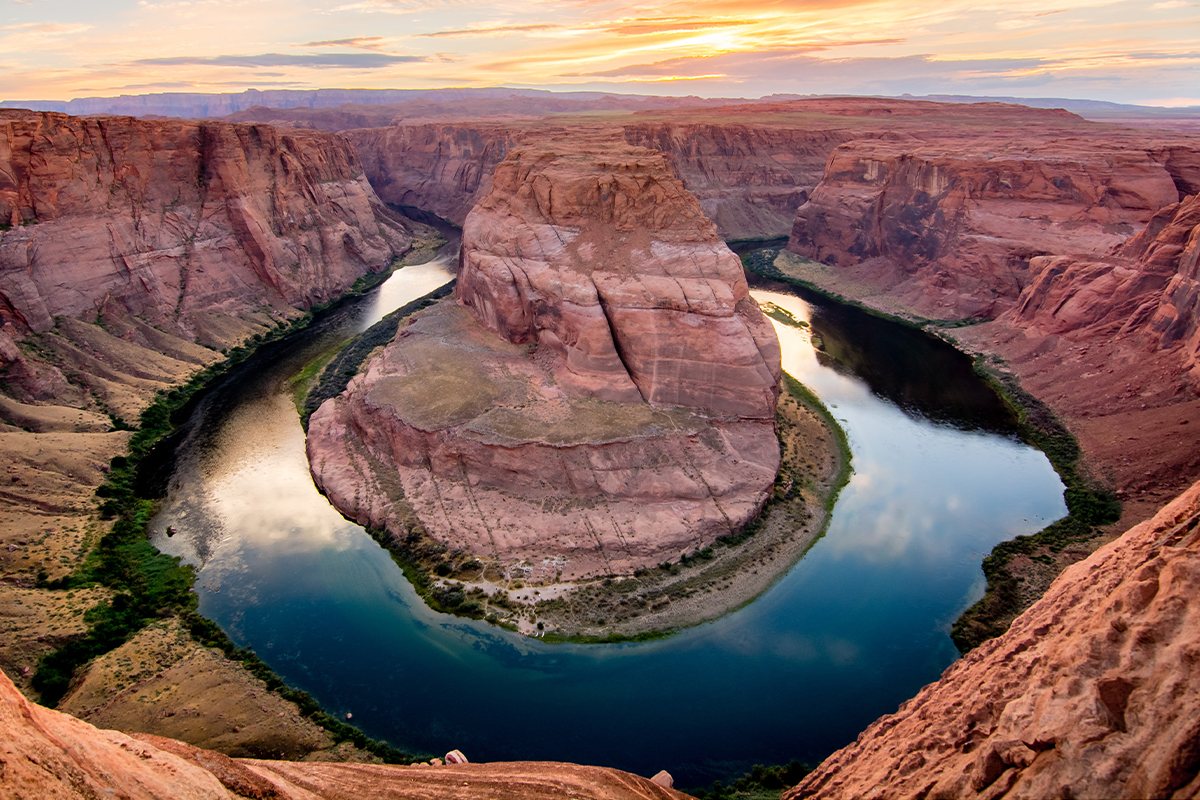
Final Thoughts
A Grand Canyon visit is an excellent addition to your list of the best places to visit this year. This unbelievable spectacle has been around for over six million years. And there’s no doubt it will continue pulling visitors for thousands of years with its iconic landscapes, scenic drives, museums, water activities, and over 130 trails. If you plan to travel to the Grand Canyon, we hope this guide adds to your overall experience.
Featured image by: Tim Hart.
FAQs
Is the Grand Canyon one of the 7 Wonders?
The Grand Canyon is one of the world's seven natural wonders and the only natural wonder in the US.
Can you walk the entire Grand Canyon?
It’s possible to walk the entire 277 miles of the Grand Canyon. But far from being a mere walk, considering the steep inclines, rugged terrain, and lack of clear trails in some areas, this is a strenuous endeavor.
Can you hike in the Grand Canyon alone?
Hiking in the Grand Canyon alone can be a rewarding experience. However, it can also be too risky, especially if inexperienced and underprepared.
What is not allowed at the Grand Canyon?
Here are some restrictions to beware of when visiting the Grand Canyon National Park:
- Firearms are not allowed inside the park.
- While pets are welcome at the rim, they are not allowed in the canyon.
- Shortcutting between portions of the same or adjacent trail is strictly prohibited.
- Throwing rocks off cliffs or mountainsides is prohibited.
What do you wear when visiting Grand Canyon National Park?
Shorts and t-shirts are a staple when visiting Grand Canyon National Park during summertime. Packing sunscreen, sunglasses, and a hat to protect your skin and eyes from the sun is also a good idea. And don’t forget to carry a nominal first aid checklist to take care of emergencies before getting help.
Where to go in the Grand Canyon - South Rim or North Rim?
The South Rim will be your best destination if you're visiting the Grand Canyon Park for the first time. Its ease of access, facilities, and multiple things to do also make it an easy choice for visitors visiting the Grand Canyon with kids, particularly teens.
The North Rim is a place you should visit at least once if you're looking for the most authentic and purest Grand Canyon experience. Thanks to its remoteness and solitude, the North Rim allows you to take in the canyon's majesty without the crowds.


